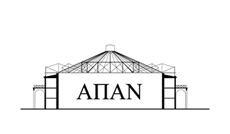Meyendorff, Byzantium and the Rise of Russia (1989)
[Bibliography]
John Meyendorff, Byzantium and the Rise of Russia. A Study of Byzantino-Russians Relations in the Fourteenth Century (St Vladimir’s Seminary Press, 2nd edition Crestwood, New York 1989)
First edition
The history of Russia is often considered as if that immense country had always been an isolate continent. However, at the time of its rise as a nation, it was politically a province of the Mongol Empire, whose capital was in Central Asia; and ecclesiastically, it was a dependency of the Orthodox Patriarchate of Constantinople, or Byzantium. This book describes the role of Byzantine (predominantly ecclesiastical) diplomacy in the emergence of Moscow as the capital of Russia in the fourteenth century, and the cultural, religious and political ties which connected the Northern periphery of the Byzantine Orthodox “Commonwealth” with its center in Constantinople.
Contents: Abbreviations pp. ix-xvi. Acknowledgments p. xvii. Map pp. xx-xxi. Introduction pp. 1-8. 1. Byzantine civilization in Russia pp. 9-28. 2. The catastrophes of the thirteen century pp. 29-47. 3. The Mongols, their Western neighbours and their Russian subjects pp. 48-72. 4. The Metropolitanate of Kiev and all Russia pp. 73-95. 5. Victory of the Hesychasts in Byzantium: ideological and political consequences pp. 96-118. 6. Cultural ties: Byzantium, the Southern Slavs and Russia pp. 119-144. 7. Byzantium and Moscow pp. 145-172. 8. Patriarch Philotheos and Russia (1364-76) pp. 173-199. 9. Metropolitan Cyprian and Moscow’s separatism (1376-81) pp. 200-225. 10. Lithuania turns westwards pp. 226-260. Conclusion: dreams and reality pp. 261-278. Appendices: Some translated sources pp. 279-310. Index pp. 311-326. Total pages 348.

